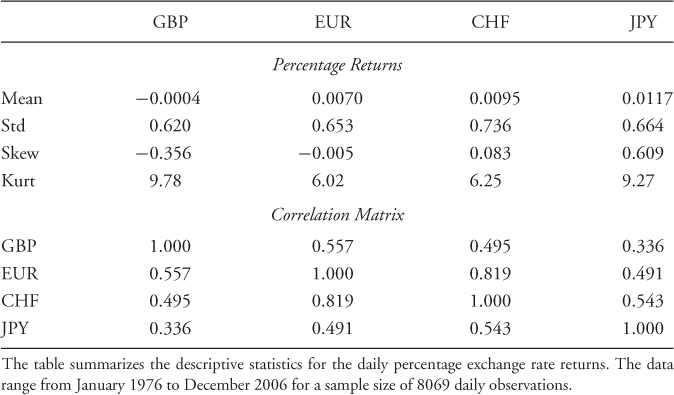15.6 Empirical Results
15.6.1 Data and Descriptive Statistics
Our analysis employs daily returns data on four major US dollar nominal spot exchange rates over the period January 1976 to December 2006 corresponding to a total of 8069 observations. The exchange rates are taken from Datastream and include the British pound (GBP), the Deutsche mark/euro (EUR), the Swiss franc (CHF) and the Japanese yen (JPY). After the introduction of the euro in January 1999, we use the official Deutsche mark/euro conversion rate to obtain the EUR series. The exchange rate is defined as the US dollar price of a unit of foreign currency so that an increase in the exchange rate implies a depreciation of the US dollar.
Table 15.1 reports descriptive statistics for the daily percentage exchange rate returns. For our sample period, the means are near zero, ranging from −0.0004 (or −0.1% per annum) for GBP to 0.0117 (or 2.9% per annum) for JPY. The daily standard deviations revolve between 0.620 for GBP (or 9.8% per annum) to 0.736 for CHF (or 11.7% per annum). Skewness is negative for two of the four FX returns, while kurtosis ranges from 6.02 for EUR to 9.78 for GBP. Finally, the average return cross-correlations are strongly positive, ranging between 0.336 and 0.819.
Table 15.1 Descriptive Statistics for Daily Exchange Rate Returns

15.6.2 Bayesian Estimation
We begin by performing Bayesian estimation ...
Get Handbook of Exchange Rates now with the O’Reilly learning platform.
O’Reilly members experience books, live events, courses curated by job role, and more from O’Reilly and nearly 200 top publishers.

